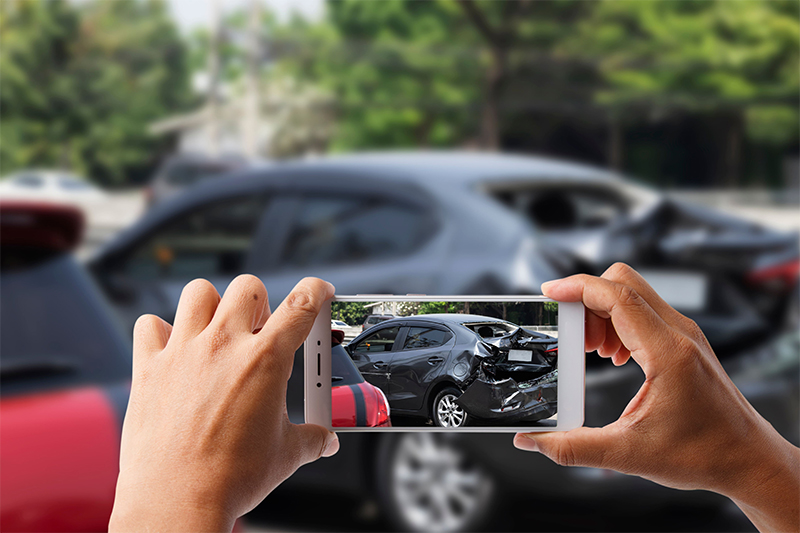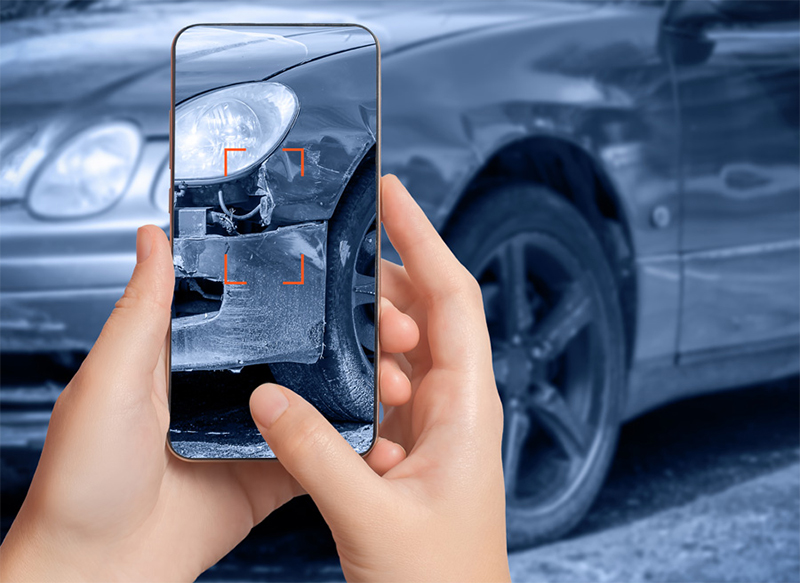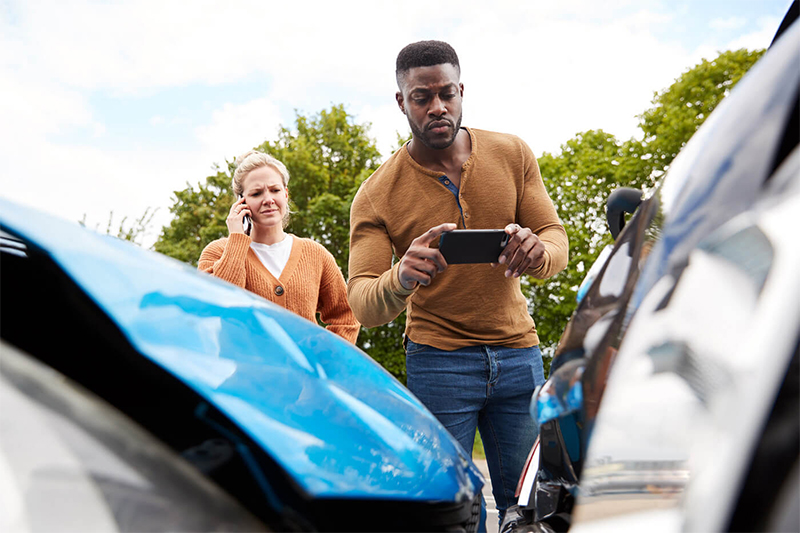Accidents can happen in the blink of an eye, leaving us shaken and uncertain about what steps to take next. Whether it’s a fender-bender or a more serious collision, the aftermath of an accident can be chaotic.
Amid the chaos, the importance of documenting the accident scene cannot be overstated. Photos and videos can serve as powerful evidence, helping you accurately recount the events and supporting your insurance claims or legal actions.
How to Take Photos and Videos of Damage at a Car Accident Scene?
When assessing the damage at a car accident scene, you should thoroughly examine the vehicles involved, street signs, curbs, and any other objects for visible damage. This includes both the exterior and interior of the vehicles.
Look for broken windows, dents, scratches, deployed airbags, and any other signs of impact. Street signs and curbs can also provide valuable clues about the accident. If they are damaged or knocked down, it indicates the force and direction of the impact.

Capture Essential Shots
When capturing visual evidence at a car accident scene, take comprehensive shots that provide a clear picture of the incident. Here are the essential shots that should be captured:
- Entire Accident Scene: Take wide-angle shots that encompass the entire scene of the accident from different angles. [1] This helps insurance companies and accident attorneys understand the overall context.
- Property Damage: Capture close-up shots of the vehicles involved, paying attention to any visible vehicle damage. Focus on areas where impacts occurred, such as dented or crumpled body panels.
- Skid Marks: Document any skid marks on the road surface. These marks can help determine the speed and braking patterns of the vehicles involved, which may be required in determining fault.
- Traffic Signals: Include shots of traffic signals near the accident scene. This helps establish whether any violations or errors in signal operation may have contributed to the accident.
- Street Signs: Photograph any street signs in the vicinity to provide an accurate location reference. This can aid in identifying road conditions or any relevant traffic regulations.
- Weather and Lighting Conditions: Photograph the weather conditions at the time of the accident, as well as the lighting, to establish visibility.
- Injuries: If injuries are evident and the individuals involved consent, document any injuries or medical treatment.
Use Proper Techniques
When documenting damage at an accident scene, use proper techniques for clear and comprehensive visual evidence. Here are some guidelines to follow:
- Camera Settings: Set your camera to the highest resolution and quality settings available. This will create clear and detailed photos, allowing for easier analysis by insurance companies, injury lawyers, and claims adjusters.
- Lighting: Adjust the camera’s exposure settings to achieve a well-lit and balanced image. Avoid shooting directly into the sun or other bright light sources, as this can result in overexposed or washed-out photos. If necessary, use the camera’s flash or external lighting to illuminate darker areas and enhance visibility.
By using proper techniques, you can ensure that the visual evidence accurately represents the damage and conditions present, helping to support your case or claim.

Respect Privacy
Respecting privacy at an accident scene is of utmost importance to maintain ethical standards. When documenting the scene of an accident, be mindful of the sensitive nature of the situation as individuals involved in the accident may be experiencing both physical injuries and emotional distress.
Accident scenes often involve the exchange of personal details like driver’s licenses and insurance cards. Handle this information with care and confidentiality to protect the privacy of those involved. Any personal information should not be shared with anyone who does not have a legitimate need to know.
Respecting privacy also means being considerate of the emotional state of the accident victims. Photography and video recording may be necessary to document the scene, but it should be done with empathy and sensitivity. Avoid capturing distressing or invasive images that could further traumatize the individuals involved.
Enable Time Stamps and Geolocation
When documenting a car accident scene with photos and videos, enabling time stamps and geolocation can provide major details for accurate and credible evidence.
- Check the settings on your device to confirm that time and date stamps are enabled for photos and videos. This feature will add the exact time and date to each image or footage. This is particularly useful when reconstructing the sequence of events leading up to the accident.
- Activate the geolocation feature on your device. This will record the specific location where each photo or video was taken using GPS coordinates. Geolocation is a vital aspect for establishing the exact position of vehicles involved and any associated road conditions.

Backup Your Data
Accidents can be chaotic, and there is always the risk of losing or corrupting the valuable evidence you have collected.
There are several options for backing up your data, including cloud storage and external hard drives. Cloud storage is a preferred option because it provides a convenient and secure way to store your files online so that they can be accessed from any device with an internet connection. Even if your device is damaged, lost, or stolen, the data remains safe with cloud storage.
Knowing how to take photos and videos of damage at an accident scene is a valuable skill that can make a significant difference in the aftermath of a car accident. These visual records can serve as essential evidence when dealing with insurance companies, law enforcement, or in potential legal proceedings.
Your photos and videos are not just pictures; they are your voice in a complex and often stressful legal process. They tell the story of the accident, support your claims, and can significantly impact the outcome of your case. In the event of an accident, use your camera as a powerful tool to take essential steps to protect your rights and ensure a fair resolution.
If you have been in a recent car accident, and require a personal injury lawyer that can help you get a fair resolution, book a free consultation with Goldberg & Loren today!
Documenting an Accident Scene Infographic:
Source:
[1] Tips for Taking Clear and Accurate Photos Following An Accident. (n.d.). Retrieved March 17, 2024, from https://nationalgeneral.com/about-us/news-and-blog/tips-for-taking-accident-photos/


